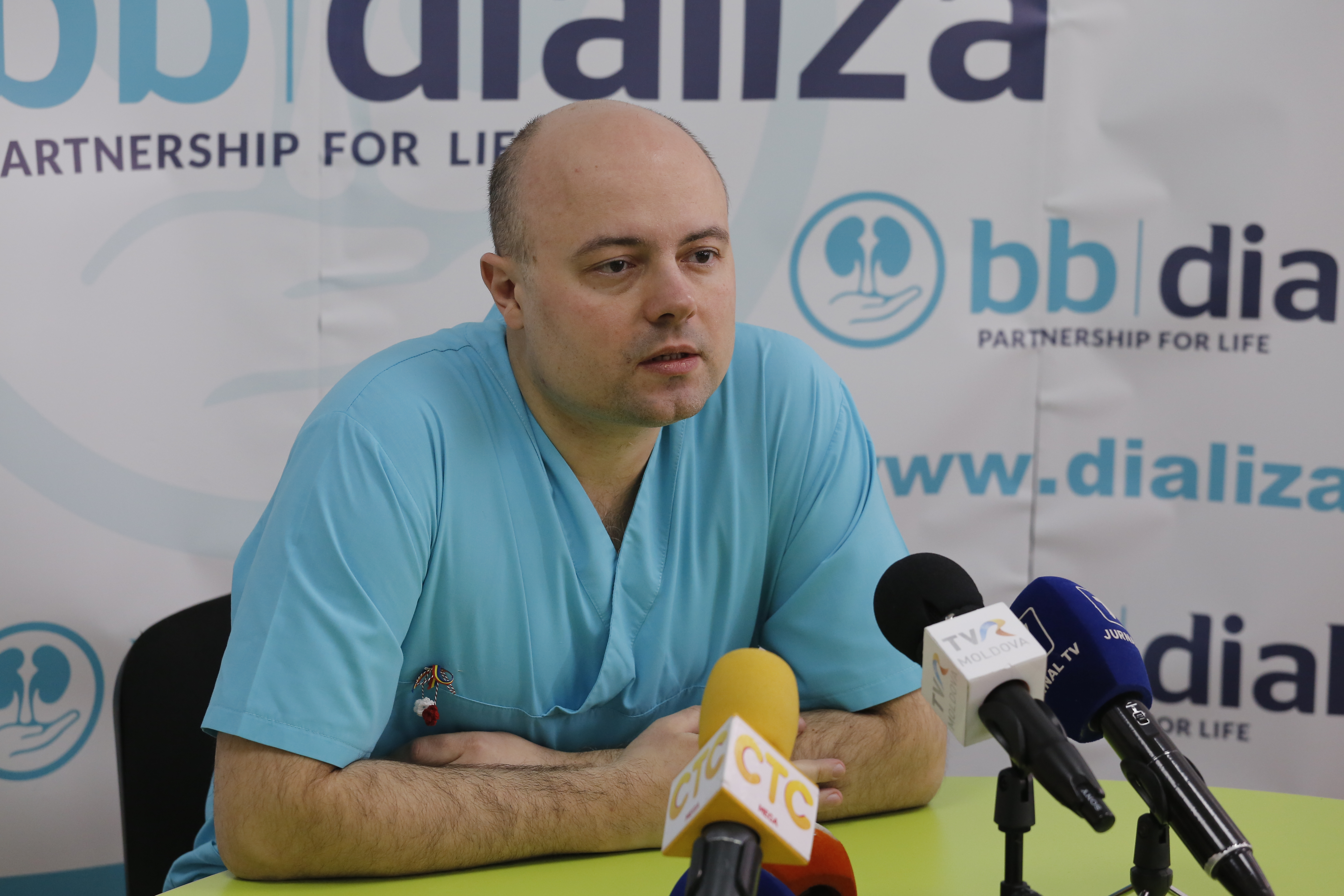On June 9, 2017 the scientific conference on the topic “Development of dialysis service in the Republic of Moldova” was organized, in which over 100 specialists in nephrology, urology and other medical areas, related with the dialysis service, took part.
Mr. Cepoida, what is the main message that you wish to convey to the participants of the Conference?
– Remarkable results obtained by the “BB-Dializă” Center, increase of service accessibility for the citizens of the RM and improvement of dialysis patients health, confirmed by objective methods, definitely demonstrate that the establishment of public-private partnership for development of dialysis service, as an efficient instrument to solve the problems previously existing in the area, was a correct choice.
-Although the Dialysis Center has free places, some patients either don’t manage to benefit from quality services or do not exactly follow the path to get them. However, what is the correct path to be followed by a patient diagnosed with chronic renal insufficiency in terminal stage?
– The correct path is the only one and it includes three simple steps:
First step: Regular test for determining the level of creatinine. If the concentration of this metabolite exceeds the ceiling of 500 mcmol/l (5 norms), then the indicators for dialysis (artificial replacement of kidney function) emerge.
Second step: The patient goes to the Dialysis Center (we ensure the consultation of nephrologist) or another medical specialist (nephrologist, urologist, cardiologist, endocrinologist), who will send the patient to one of initial dialysis centers – Republican Clinical Hospital, Urgent Medicine Institute or Municipal Clinical Hospital #3.
Third step: After ensuring protection of a vascular accident, the patient makes 3 – 6 dialysis sessions at the initial center and after that the responsible doctor will contact the „BB-Dialysis” Center and based on the adhesion form and official invitation the patient is transferred to our Center, which ensures treatment through chronic dialysis.
– Since the beginning of the project “Public – Private Partnership for Dialysis Services in Moldova” there were rumors that the actual number of patients requiring to be included in the dialysis is much higher than the officially recorded one. What do you think, what measures should be taken so that people who are in the risk group to be identified earlier?
Although during the twenty-first century dialysis service had a pretty dynamic evolution, before opening the Center for Dialysis there has been noticed a significant discrepancy between real needs and the capabilities of existing Centers. The opening of Dialysis Center and optimizing its operation allowed to essentially increase the accessibility to dialysis services for population and three times amplify the rate of new patients enrolled in dialysis. There is a large number of indicators that put forward the need to initiate the dialysis. First of all people belonging to risk groups: people with diabetes, hypertension, men after 55 years, women after 60, etc. – at least once a year, these persons have to verify the level of creatinine in serum and, in case of detection of increased levels, they need to consult the nephrologist or urologist to develop a treatment plan. I reiterate, if creatinine concentration is over 500 mcmol/l (5 norms), the doctor should talk to the patient about the dialysis procedures as an option substituting kidney function.
Thank you.



